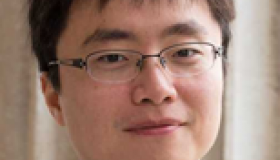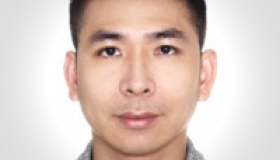讲座预告 || 国立交通大学教授带来讲座
Basic Information
Topic: Unconditionally energy stable immersed boundary method for inextensible interface problems
Time & Date: Jan. 18 (Friday), 10:00 a.m.-11:00 a.m.
Venue: Room 102, Teaching D Building
Speaker: Prof. Ming Chih Lai, Professor, National Chiao Tung University
Abstract
In this talk, we introduce an immersed boundary method to solve the stationary and non-stationary inextensible interface problems. The problem comes from the simulation of the vesicle dynamics in fluid flows. The scheme uses a linearly semi-implicit discretization for the non-stationary Stokes part and we have proved that the spreading operator acting on the tension and the surface divergence operator acting on the velocity are skew-adjoint numerically so that the resultant matrix without bending is symmetric. Moreover, we can prove that the proposed immersed boundary scheme for non-stationary problem with bending is unconditionally energy stable.
About the Speaker

Prof. Ming Chih Lai is a Chair professor at Department of Applied Mathematics, National Chiao Tung University(NCTU), Taiwan. Prof. Lai obtained his PhD from Courant Institute of Mathematical Sciences, New York University 1998. After one year’s postdoc at Duke University, he became an Assistant Professor at NCTU in 1999. Then he was promoted as associate professor and full professor. He served as the chair for math department at NCTU, and he is founding director for Center of Mathematical Modeling and Scientific Computing at NCTU. He received outstanding research award from Taiwan. His research interests include Immersed boundary and immersed interface methods, Modeling and simulations for interfacial flow problems and Fast solvers for elliptic equations in non-Cartesian coordinates. He has published more than 60 papers in international recognized journals. Currently, He also served as the Associate Editor for two Journals: Communications in Computational Physics and East Asian Journal of Applied Mathematics.




